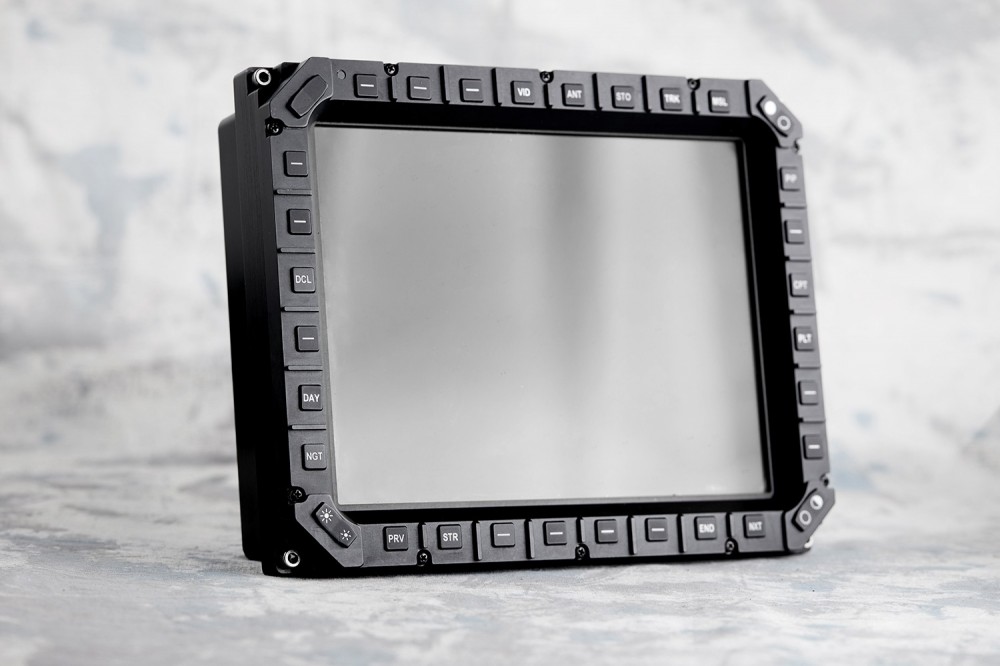Rugged display manufacturers play a pivotal role in advancing cockpit innovation across military and commercial aviation platforms, driving technological evolution through specialized engineering expertise, advanced manufacturing capabilities, and a deep understanding of mission-critical operational requirements. These companies bridge the gap between emerging display technologies and practical aviation applications, ensuring rugged touchscreen displays meet stringent certification standards while delivering enhanced pilot effectiveness and operational safety.
Technology Translation and Aviation-Specific Adaptation
Rugged display manufacturers serve as technology translators, adapting consumer electronics innovations and industrial display technologies for aviation-specific requirements that include extreme environmental tolerance, electromagnetic compatibility, and safety-critical reliability standards. This translation process requires deep engineering expertise in materials science, optical engineering, and environmental testing to ensure commercial display technologies can withstand aviation operational stresses.
Advanced materials development represents a core competency of leading rugged display manufacturers, who invest heavily in specialized substrates, optical coatings, and protective layers that enable standard display technologies to operate reliably under aviation environmental extremes. Proprietary bonding techniques and hermetic sealing processes protect sensitive electronic components from moisture, contamination, and thermal cycling that would destroy conventional displays.
Environmental hardening processes developed by rugged display manufacturers transform commercial LCD and OLED technologies into aviation-qualified components capable of continuous operation across temperature ranges from -55°C to +85°C while maintaining optical clarity and touch sensitivity. These processes include thermal stress testing, vibration qualification, and electromagnetic compatibility verification that ensure reliable performance throughout extended operational lifespans.
Certification expertise enables rugged display manufacturers to navigate complex aviation standards including DO-160, MIL-STD-810, and DO-178 software requirements, providing comprehensive documentation and test data that support aircraft certification processes. This expertise reduces development timelines and certification costs for system integrators and platform manufacturers developing next-generation cockpit systems.
Collaborative Innovation and System Integration
Rugged display manufacturers collaborate closely with aircraft manufacturers, system integrators, and research institutions to identify emerging operational requirements and develop innovative solutions that address future cockpit needs. These partnerships enable early technology insertion and risk reduction through shared development programs and technology demonstration projects.
Co-development programs between rugged display manufacturers and major system integrators like Thales, Honeywell, and BAE Systems accelerate technology maturation and ensure new display innovations align with aircraft integration requirements from initial design phases. These collaborations reduce technical risk and development costs while ensuring optimal performance in specific aircraft applications.
Technology roadmap alignment ensures rugged display manufacturers develop capabilities that meet future operational requirements identified by military and commercial aviation customers. Long-term planning processes coordinate research investments with projected aircraft development timelines, enabling timely availability of advanced display technologies for next-generation platforms.
Standards development participation allows rugged display manufacturers to influence industry standards and ensure emerging requirements reflect practical manufacturing capabilities and cost-effective implementation strategies. Active participation in RTCA committees, SAE standards groups, and military specification development ensures industry standards remain technically achievable and economically viable.
Advanced Manufacturing and Quality Assurance
Specialized manufacturing capabilities developed by rugged display manufacturers enable high-reliability production of complex display assemblies that meet stringent quality requirements essential for safety-critical aviation applications. Cleanroom facilities, precision assembly equipment, and automated testing systems ensure consistent quality and performance reliability across production volumes.
Quality management systems compliant with AS9100 and ISO 9001 standards provide comprehensive traceability and quality control throughout manufacturing processes. Statistical process control and failure mode analysis identify potential quality issues before they affect delivered products, ensuring high reliability and customer satisfaction.
Advanced testing capabilities including environmental stress screening, burn-in procedures, and accelerated aging tests verify long-term reliability and performance stability under operational stress conditions. Automated test equipment and data analysis systems provide comprehensive performance characterization that supports reliability predictions and warranty commitments.
Supply chain management expertise ensures reliable component sourcing and materials qualification that maintain consistent quality despite global supply chain disruptions and component obsolescence challenges. Strategic supplier partnerships and component lifecycle management enable sustained production of critical display components throughout extended aircraft service lives.
Innovation in Human-Machine Interface Design
Rugged display manufacturers drive human-machine interface innovation through advanced research in pilot ergonomics, information presentation optimization, and interaction paradigm development. Human factors engineering expertise ensures new display technologies enhance pilot performance rather than merely providing technological advancement.
Pilot workload optimization research conducted by leading display manufacturers utilizes eye-tracking studies, cognitive load analysis, and performance metrics to develop interface designs that minimize pilot fatigue and maximize operational effectiveness. This research directly influences display layout optimization, information prioritization algorithms, and interaction design principles.
Emerging interaction technologies including gesture recognition, voice command integration, and eye-tracking interfaces are being developed and refined by rugged display manufacturers to provide alternative interaction methods that reduce pilot workload during high-stress operational scenarios. These technologies offer backup control methods when traditional interfaces become compromised or inaccessible.
Artificial intelligence integration enables adaptive interfaces that automatically adjust information presentation and control layouts based on flight conditions, pilot preferences, and mission requirements. Machine learning algorithms developed by display manufacturers continuously optimize interface performance based on operational feedback and pilot interaction patterns.
Market Leadership and Technology Advancement
Leading rugged display manufacturers invest significantly in research and development to maintain technological leadership and drive industry innovation. R&D spending typically exceeds 10% of revenue for companies committed to advancing display technology for critical applications including military aviation, commercial transport, and specialized mission aircraft.
Patent portfolios developed by innovative display manufacturers protect proprietary technologies while establishing technological leadership in specialized market segments. Intellectual property strategies balance competitive advantage with industry collaboration to advance overall technology capabilities while maintaining market position.
Technology demonstration programs showcase emerging capabilities and validate new technologies in operational environments before full-scale production deployment. These programs reduce customer risk and accelerate technology adoption while providing valuable feedback for product optimization and manufacturing refinement.
Global market presence enables rugged display manufacturers to serve international customers and participate in multinational development programs that drive technology standardization and interoperability. Regional manufacturing capabilities and local support infrastructure ensure responsive customer service and compliance with regional requirements.
Future Technology Development Pathways
Quantum display technologies represent the next frontier for rugged display manufacturers, offering unprecedented brightness levels, color accuracy, and energy efficiency that could revolutionize cockpit display capabilities. Research investments in quantum dot technologies and perovskite materials may enable next-generation displays with performance characteristics far exceeding current limitations.
Flexible and conformable displays under development by innovative manufacturers could enable curved cockpit surfaces and integrated display installations that maximize information presentation while minimizing cockpit space requirements. These technologies promise enhanced design flexibility for future aircraft platforms.
Augmented reality integration represents a convergence opportunity where rugged display manufacturers collaborate with AR technology companies to develop seamless integration between traditional cockpit displays and head-mounted display systems. This integration could fundamentally transform pilot interface paradigms and operational effectiveness.
Aeromaoz works closely with leading rugged display manufacturers worldwide to advance cockpit innovation and deliver cutting-edge rugged touchscreen display solutions that meet the evolving needs of military and commercial aviation platforms, ensuring mission-critical reliability while enhancing pilot effectiveness and operational safety in the most demanding environments.
Read More: Rugged HMI in Aerospace: Improving Control, Safety, and Efficiency













